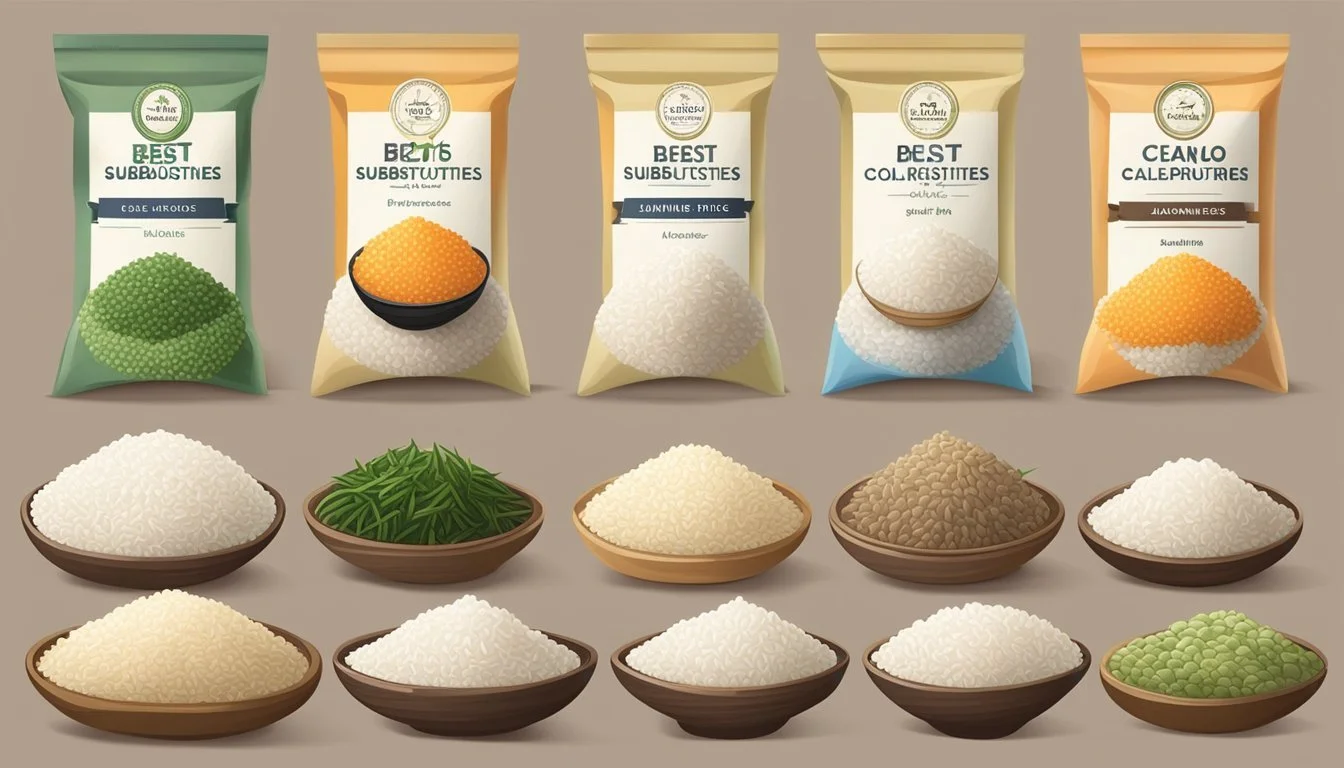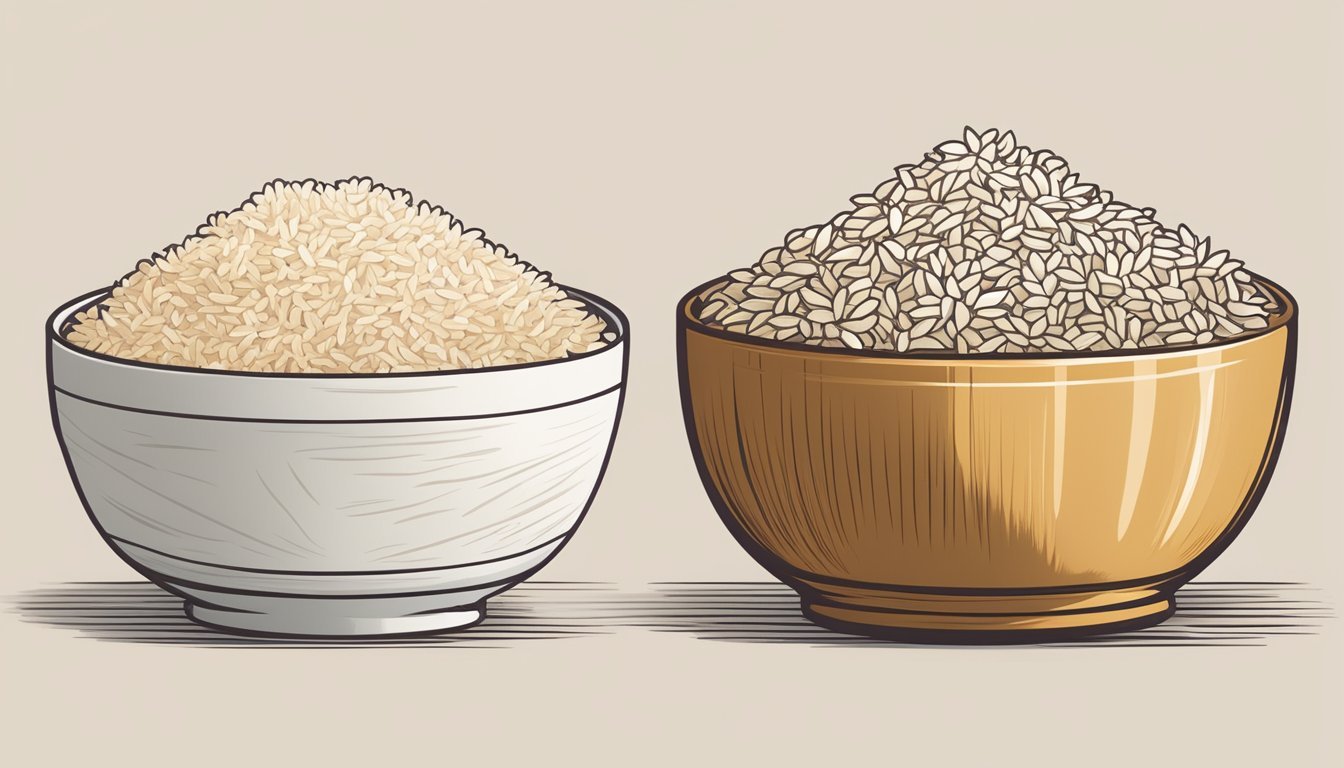Calrose Rice Substitutes
Top Alternatives for Cooking
For those who enjoy the creamy texture of dishes made with Calrose rice but are looking for alternatives, there are several effective substitutes available. Calrose rice, a medium-grain variety from California, is well-known for its ability to absorb flavors and provide a smooth consistency. Similar options like Arborio rice, often used in risottos, offer a comparable starch content, making them excellent choices when Calrose isn't on hand.
Other appealing alternatives include basmati rice, which, while typically used in different culinary contexts, can bring a unique nutty flavor and aroma to the dish. The technique involves allowing the starch to release slowly, which can replicate the rich texture of Calrose. For those seeking a more exotic option, black rice provides both a striking appearance and a nutty, sweet flavor that pairs well in many recipes traditionally featuring Calrose rice.
Exploring these substitutes can not only help in a pinch when you run out of Calrose rice but also offer the opportunity to experiment with new flavors and textures in your cooking. Each alternative brings its unique characteristics to the table, ensuring your dishes remain delicious and enjoyable.
Understanding Calrose Rice
Calrose rice, a medium-grain variety, is known for its distinctive texture and versatility in cooking. It has a mild flavor, making it a popular choice in many kitchens.
Characteristics of Calrose Rice
Calrose rice is a type of medium-grain rice that originates from California. It is recognized for its slightly sticky texture when cooked, which is a result of its high starch content.
The grains swell and soften, making them ideal for dishes that require a creamy consistency. This ability to hold together while also being tender makes Calrose rice perfect for recipes like sushi, rice bowls, and puddings.
The flavor of Calrose rice is mild and slightly nutty, allowing it to complement a variety of ingredients without overpowering them. Whether used in simple dishes or complex recipes, this rice offers a dependable and adaptable base.
Culinary Uses
Due to its unique characteristics, Calrose rice is used in a wide range of culinary applications. One common use is in sushi, where its sticky texture helps the rice adhere to other ingredients.
It is also favored in rice bowls, where it absorbs flavors from sauces and seasonings effectively. Cooking methods for Calrose rice are varied; it can be prepared on the stovetop, in a rice cooker, or even in the microwave.
When preparing Calrose rice, it is often recommended to rinse the grains thoroughly to remove excess starch, leading to a cleaner and more distinct texture. Versatile and easy to cook, Calrose rice is a staple in many kitchens around the world.
Benefits of Calrose Rice
Calrose rice offers notable advantages due to its nutritional profile and versatility. This section delves into the specifics of what makes Calrose rice a beneficial choice for everyday cooking.
Nutritional Profile
Calrose rice is a good source of carbohydrates, providing energy and aiding in proper body function. One cup of cooked Calrose rice contains roughly 208 calories and 44 grams of carbohydrates.
It also supplies essential nutrients. Specifically, Calrose rice contains small amounts of protein, approximately 4 grams per serving. This protein supports muscle repair and growth.
Calrose rice contains trace amounts of calcium, iron, potassium, and magnesium. These minerals are crucial in supporting overall health, including bone health, oxygen transport, and muscle function. While it may not be as nutrient-dense as some whole grains, Calrose rice still contributes to a balanced diet.
Versatility in Recipes
Calrose rice's texture and flavor make it exceptionally versatile in culinary applications. It absorbs flavors well, making it ideal for a variety of dishes.
In Asian cuisine, Calrose rice is commonly used for sushi and rice bowls. It also works well in soups and stews, where its plump grains add body and substance.
For Western dishes, it's perfect in pilafs and casseroles. Given its ability to hold up under different cooking methods—boiling, baking, and microwaving—Calrose rice fits easily into numerous recipes, adapting to both traditional and experimental culinary styles.
This adaptability not only enhances the dining experience but also makes meal preparation more flexible and enjoyable.
Best Substitutes for Calrose Rice
There are various alternatives to Calrose rice that replicate its texture and flavor profile effectively. These substitutes range from other types of medium-grain rice to gluten-free options, ensuring that there is a suitable choice for every dietary need.
Arborio Rice as a Substitute
Arborio rice is a popular alternative known for its high starch content, which creates a creamy consistency in dishes. Originally used in risottos, arborio rice offers similar characteristics to Calrose rice, making it an excellent option for recipes requiring a soft and slightly chewy texture.
Use in dishes that highlight creamy textures, like risottos and rice puddings. Arborio rice absorbs flavors well, making it versatile for various cuisines. It's particularly notable for its short, plump grains which retain a firm core when cooked.
Jasmine and Basmati Rice Alternatives
Jasmine rice and basmati rice are long-grain varieties but can substitute Calrose rice in certain contexts. Jasmine rice brings a light floral aroma and a slightly sticky texture, which can work well in dishes like stir-fries and curries.
Basmati rice adds a nutty flavor and fragrant aroma, ideal for pilafs and side dishes. Although these are not as creamy as Calrose rice, they can be a good fit in recipes where individual grains are preferred. Both Jasmine and Basmati provide unique flavors and add diversity to meals traditionally made with Calrose rice.
Exploring Gluten-Free Options
For those on a gluten-free diet, brown rice stands out as a nutritious substitute. Brown rice maintains a nuttier taste and firmer texture compared to Calrose rice. Its higher fiber content also offers added health benefits.
Sushi rice or glutinous rice, often used in Japanese cuisine, can also mimic the sticky and chewy qualities of Calrose rice. These varieties are particularly good in recipes where a bit of extra stickiness is desired. They blend well in dishes requiring a cohesive texture.
Other Short-Grain Rice Varieties
Other suitable options include Koshihikari rice, a high-quality Japanese short-grain rice. Known for its distinct stickiness and umami flavor, it can be an excellent alternative in both sweet and savory applications.
Sticky rice or glutinous rice is another substitute, offering a more adhesive texture that works well in desserts and certain Asian dishes. These short-grain varieties support a wide array of recipes, maintaining the essential stickiness and texture akin to Calrose rice.
Non-Rice Alternatives
For those looking to replace Calrose rice, non-rice alternatives such as grains offer versatile and nutritious options. These substitutes can deliver unique textures and flavors in a variety of dishes.
Using Grains as Substitutes
Quinoa
Quinoa is a protein-rich grain that works well as a Calrose rice substitute. It has a slightly nutty flavor and a fluffy, chewy texture when cooked. Quinoa is a great option for those looking to add more nutrients to their meals.
Couscous
Couscous, made from semolina, has a light and fluffy texture. This quick-cooking alternative is perfect for those who need a fast and easy replacement for rice. It absorbs flavors well, making it a versatile addition to many dishes.
Pearled Barley
Pearled barley has a chewy texture and a mild flavor. It's a good choice for soups and stews, where it adds both substance and nutrition. As a whole grain, it also provides dietary fiber and essential minerals.
Bulgur Wheat
Bulgur wheat is a quick-cooking grain made from partially cooked, dried wheat. It has a nutty flavor and rough texture, making it suitable for salads and side dishes. Its quick preparation time is convenient for busy cooks.
Farro
Farro is an ancient grain with a hearty, chewy texture and nutty flavor. It works well in soups and salads. Farro is rich in protein, fiber, and iron, making it a highly nutritious alternative to Calrose rice.
Orzo Pasta
Orzo pasta, though not a grain, is often used as a substitute. This rice-shaped pasta offers a tender texture and mild flavor that can complement many dishes. It is particularly good in salads and soups, providing a familiar yet unique twist.
Cooking Techniques for Substitutes
Using Calrose rice substitutes involves understanding specific techniques to achieve the ideal texture, consistency, and flavor absorption for each type of rice. Attention to starch content and cooking methods is key.
Achieving the Right Texture
When substituting Calrose rice, the primary goal is to match the creamy texture it provides. Medium-grain varieties like Arborio and Carnaroli are good choices due to their high amylopectin content.
For a smoother texture, as with Arborio, cook it slowly to release starch gradually. Stirring frequently allows the starch to thicken, creating the desired creaminess.
For less creamy but still cohesive textures, like with Basmati or Quinoa, adjust cook times and liquid ratios. Basmati requires a lighter touch—avoid over-cooking to prevent mushiness and retain its distinct grains.
Cooking Methods for Different Substitutes
Arborio Rice: Use the risotto method—sauté the rice in oil or butter, then slowly add liquid. Stir constantly until each addition is absorbed. This technique enhances starch release, giving a creamy result.
Basmati Rice: Rinse thoroughly to remove excess starch. Boil using the absorption method—bring to a boil, then cover and simmer until done. This keeps grains separate and fluffy.
Quinoa: Rinse before cooking to remove any bitterness. Use a 2:1 liquid to quinoa ratio and cook until liquid is absorbed. Quinoa offers a nutty flavor and a slightly chewy texture.
Black Rice: Requires a longer cook time due to its fibrous husk. Simmer with plenty of water and test for tenderness, then drain excess water. This results in a unique texture and visually striking dish.
By focusing on these techniques, each substitute can mimic or enhance the characteristics provided by Calrose rice, allowing for versatility in various recipes.
Where to Buy Substitutes for Calrose Rice
Finding substitutes for Calrose rice is straightforward as many options are easily available in various retail outlets.
Grocery Stores: Most local grocery stores carry a variety of rice substitutes. Look for medium-grain and long-grain varieties like Arborio or Basmati, which can often be found in the rice or grains aisle.
Supermarkets: Larger supermarkets usually have a more extensive selection. Chains such as Walmart, Target, and Kroger stock different rice types. Here, you might find Jasmine Rice, Basmati Rice, and even Black Rice.
Asian Markets: For more specialized rice varieties, visiting Asian markets can be a great option. Stores like H Mart and 99 Ranch Market often have a wide array of rice types including Glutinous Rice and alternative grains that resemble Calrose Rice in texture and flavor.
Availability: These substitutes are often readily available online as well. Websites like Amazon, Walmart's online store, and specialty food sites offer a broad range of options which can be delivered to your doorstep.
Key Substitutes to Look For:
Arborio Rice
Basmati Rice
Jasmine Rice
Black Rice
Glutinous Rice
By exploring these locations, you should be able to find suitable substitutes that meet your culinary needs.
Substitute Comparison
When considering substitutes for Calrose rice, it's crucial to compare their taste, nutritional values, and textures to determine which option best suits your culinary needs.
Taste and Flavor Profiles
Black rice features a nutty and sweet flavor which makes it distinct yet somewhat similar to Calrose rice. Calrose rice itself has a mild flavor that absorbs spices and ingredients well. On the other hand, Arborio rice, another common substitute, offers a creamy consistency and a slightly nutty taste.
Pearled barley provides a slightly earthy flavor which can complement various dishes but differs from the more neutral taste of Calrose rice. It's important to note these subtle differences as they can significantly influence the overall flavor of your dish.
Nutritional Differences
Calrose rice is a medium-grain rice with a moderate amount of starch, contributing to its slightly sticky texture. Black rice is noted for its high antioxidant content, specifically anthocyanins, which give it its distinctive color. It also contains more fiber and iron compared to Calrose rice.
Arborio rice has a high starch content, which is beneficial for creating a creamy consistency in dishes like risotto. Pearled barley, on the other hand, stands out with its substantial fiber and protein content, offering 8 grams of fiber and 5 grams of protein per cup. This makes barley a nutrient-dense alternative.
Textural Distinctions
Calrose rice becomes tender and slightly sticky when cooked, ideal for sushi and dishes needing a cohesive texture. Black rice while also becoming tender, retains a slightly chewy texture which can add an interesting element to your meals.
Arborio rice is renowned for its ability to release starch, resulting in a smooth and creamy texture perfect for risottos. In contrast, pearled barley remains chewier even after cooking, offering a different mouthfeel compared to the soft and slightly sticky consistency of Calrose rice. Each of these alternatives brings a unique texture to the table, influencing the final outcome of your dish.







